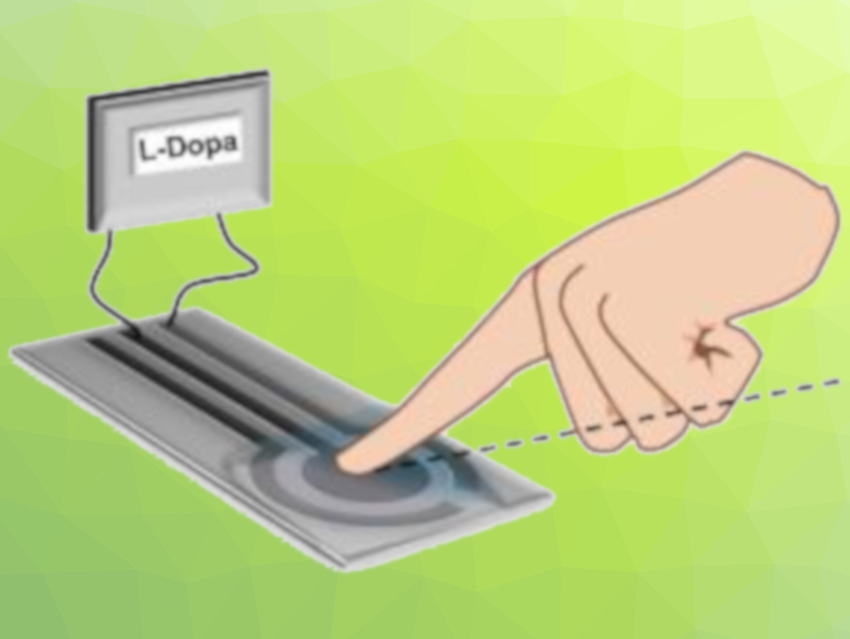Parkinson’s disease is a common neurological disorder that affects over six million individuals worldwide. Levodopa, or L-Dopa, is a commonly used drug for the symptomatic therapy of this disease. However, long-term levodopa therapy generally has complications: Suboptimal dosing can cause patients to experience muscular stiffness, slowed movements, and tremors, while overdosing can cause excessive involuntary movements. The drug’s levels in plasma fluctuate, which leads to fluctuating symptoms.
The response to levodopa therapy can vary significantly between patients, which means optimal disease management requires a fine-tuned, personalized dosing regimen. Methods for the real-time monitoring of L-Dopa levels could help with this.
Joseph Wang, Irene Litvan, University of California San Diego, La Jolla, USA, and colleagues have found that levodopa levels can be tracked in real time using a sweat-based, non-invasive sensor strip (pictured below). Simply touching an electrode strip allows the levodopa from naturally secreted fingertip sweat to be collected into a porous hydrogel. The drug’s levels are then electrochemically measured by the sensor. In the sensor, levodopa is first oxidized in a tyrosinase-catalyzed reaction to give dopaquinone, and then its levels are measured via the low-potential electrochemical reduction of this quinone derivative.

The team used this approach to collect personalized pharmacokinetic profiles of levodopa within healthy human subjects after ingestion of a single tablet by each individual. The researchers believe that the finger-touch sensor could allow tailoring the optimal drug dosage and timing for each patient, and thereby could address some of the challenges of managing Parkinson’s disease.
- Non‐invasive Sweat‐based Tracking of L‐Dopa Pharmacokinetic Profiles Following an Oral Tablet Administration,
Jong-Min Moon, Hazhir Teymourian, Ernesto De la Paz, Juliane R. Sempionatto, Kuldeep Mahato, Thitaporn Sonsa-ard, Nickey Huang, Katherine Longardner, Irene Litvan, Joseph Wang,
Angew. Chem. Int. Ed. 2021.
https://doi.org/10.1002/anie.202106674




